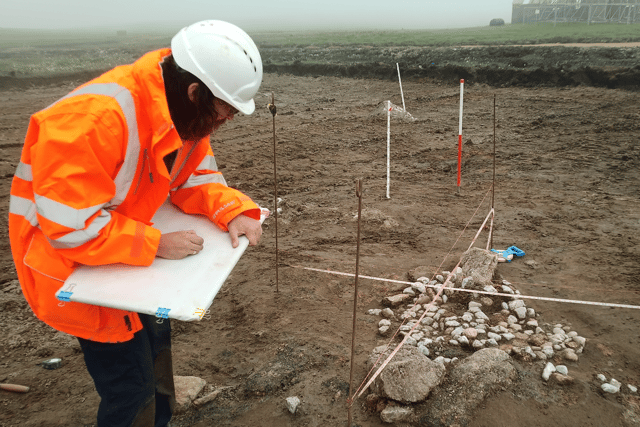SaxaVord Spaceport: ancient cemetery found at Shetland rocket launch site
and live on Freeview channel 276
The remains of what is believed to be a bronze Age ritual cremation cemetery has been uncovered at the site of a UK spaceport.
The discovery was made during groundworks at Shetland's planned SaxaVord spaceport, on the Lamba Ness peninsula in Unst.
Advertisement
Hide AdAdvertisement
Hide AdThe spaceport hopes to host Britain's first vertical rocket launch before the end of 2023.


Pits, large boulders, and burnt bone were found, along with white quartz, which is associated with burial tombs and rock artwork, suggesting it was a ritual cremation cemetery. Archaeologists think it may date from 2200-1800 BC.
SaxaVord said it would continue to support the study, and it would not hamper work at the spaceport.
The site wants to host multiple launches this year - but is awaiting its spaceport licence from the Civil Aviation Authority.
Advertisement
Hide AdAdvertisement
Hide AdKatie O'Connell, of site assessors AOC Archaeology, said: "The several deposits of burnt bone which have been found are likely associated with the remains of cremation deposits.
"The number and density of cremations suggest that the location of their discovery was likely a cremation cemetery that may have been in continuous use over time in prehistory.
"A standout feature uncovered so far is the remains of a quartz setting. White quartz is often suggested to have had significance in prehistory and is found in association with burial tombs, rock art panels, and deposited carefully at domestic sites."
She added: "Though excavation is only beginning, there may be a relation between the large stones, alignments of pits, the quartz setting, and the cremation cemetery, suggesting that together these form part of a ritual complex."
Advertisement
Hide AdAdvertisement
Hide AdDr Val Turner, Shetland's regional archaeologist, said she had "always suspected" that some of Shetland's rings of boulders and low stones could in fact be Bronze Age cremation cemeteries, so it was "hugely exciting".
She explained: "The Bronze Age is perhaps the period of Shetland's past which we know least about and this is a wonderful opportunity to change that."
SaxaVord spaceport chief executive Frank Strang said: "This is a tremendously exciting discovery and we will be supporting further study of the remains to find out the full story.
"With Unst's Viking heritage, we had always thought of the timespan from the longship to the spaceship. Now we know there has been activity on our site for more than 4,000 years it's the Bronze Age to the Space Age."
Comment Guidelines
National World encourages reader discussion on our stories. User feedback, insights and back-and-forth exchanges add a rich layer of context to reporting. Please review our Community Guidelines before commenting.
